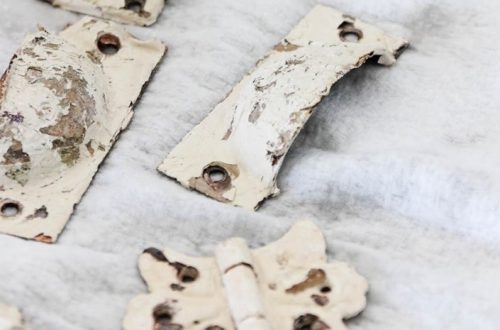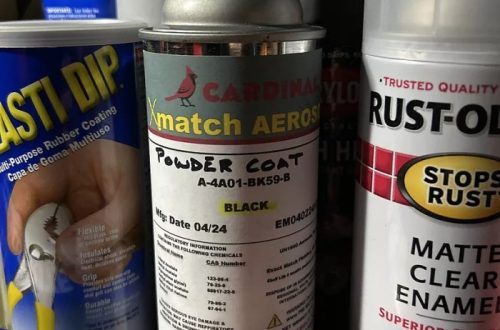Oil pastels are a fantastic art medium for beginners. They’re vibrant, easy to blend, and forgiving of mistakes. Unlike crayons, they have a richer texture that allows for beautiful layering and blending effects. This makes them perfect for creating expressive and colorful artwork.
If you’re new to oil pastels and eager to unleash your creativity, this guide will introduce you to four simple techniques that will get you started on the right foot.
Part 1: Layering and Blending

Light and Build Up:
When beginning your work with oil pastels, it is advisable to start with a delicate touch. By gently applying the color at first and leaving some of the white paper visible, you can build up the color gradually, resulting in a smooth and even application. This layering technique enables you to achieve a broader range of tones and hues, preventing your colors from becoming muddled and maintaining their vibrancy. When layering, it’s important to consider the impact of applying lighter colors over darker ones, as this can alter the final appearance and blend the colors in unique ways. Through this approach, you can create depth and dimension in your oil pastel drawings, enhancing the visual impact of your artwork while also allowing for greater control and flexibility in the artistic process.
Blending Techniques:
Oil pastels blend beautifully, allowing you to create smooth transitions between colors. Here are two popular methods:
Paper Stump/Tissue Blending: After applying your oil pastels, use a paper stump (a cylindrical blending tool) or a soft tissue to gently rub the colors together. This will soften the edges and create a seamless blend.
Finger Blending: While paper stumps and tissues offer more control, your fingers can also be a great blending tool. Use a clean finger to gently blend colors in a circular motion. Be careful not to press too hard, as this can lift the pastel or smudge your drawing.

Part 2: Linework and Details
Linework Options:
Oil pastels offer a versatile range of applications, allowing artists to create both bold, dramatic outlines and delicate, intricate lines. When working with oil pastels, you can utilize the side of the pastel to produce broad, sweeping lines that impart a sense of fluidity and movement to your artwork. Conversely, employing the tip of the pastel enables you to achieve finer lines and intricate details, adding depth and definition to your compositions. Additionally, experimenting with various pressures while using the oil pastels allows for the creation of a diverse array of line thicknesses, adding dimension and visual interest to your drawings. By mastering the art of using oil pastels for different types of lines, you can enhance the expressiveness and versatility of your artwork, empowering you to convey a wide range of emotions and moods through your artistic creations.
Adding Details with Light Touches:
When adding details like highlights, textures, or outlines on top of existing colors, use a light touch. Layering a lighter color over a darker one creates a natural-looking highlight. For adding texture, use short strokes with the side of the pastel or create scratch marks with a sharp tool like a toothpick.
Part 3: Color Exploration and Effects

Experiment with Color Mixing:
An exciting aspect of working with oil pastels is the simplicity of blending and mixing colors directly on your artwork. By applying two or more colors in close proximity and then blending them together, you can effortlessly create a new hue, expanding your color palette without the necessity of owning an extensive collection of pastels. This technique not only adds depth and richness to your artwork but also enables you to achieve a greater range of colors and tones, enhancing the versatility and expressiveness of your creations. Moreover, blending colors on the artwork itself allows for a more seamless and organic transition between hues, contributing to a sense of harmony and dynamism within the composition. Through the ease of color blending with oil pastels, artists can explore a myriad of possibilities and achieve stunning visual effects, making the process both enjoyable and rewarding.
Creating Texture:
Oil pastels offer a wide range of uses for creating diverse textures in artwork. When applying the pastels with a heavier hand, the resulting texture can be rich and tactile, adding depth and dimension to the piece. By varying the pressure and angle when using the pastels, artists can create textures that replicate the appearance of fur, grass, or clouds, achieving a heightened level of realism and visual interest within their compositions. Furthermore, leveraging the side of the pastel allows for the creation of broad strokes that emulate the texture of various surfaces, providing a versatile means of capturing the complexities of different materials in the artwork. The unique properties of oil pastels make them well-suited for achieving a wide array of textures, from smooth and velvety to rough and grainy, empowering artists to convey a rich sensory experience through their creations.

Part 4: Taking Care of Your Artwork
Fixing Mistakes:
One of the appealing aspects of working with oil pastels is their forgiving nature. If you happen to make a mistake in your artwork, there are various techniques to rectify it. For instance, you can gently lighten an area by rubbing it with a clean tissue, which can sometimes help to soften or blend the mistake into the surrounding colors. Additionally, another way to address errors is by layering another coat of oil pastel over the problematic area. This method allows you to cover up any blemishes or imperfections while adding depth and texture to the artwork. The forgiving nature of oil pastels provides artists with the freedom to experiment and correct mistakes, fostering a more relaxed and flexible creative process. This ability to easily rectify errors without compromising the overall quality of the artwork makes oil pastels a popular choice for artists of all skill levels.
Protecting Your Artwork:
Once you’re happy with your creation, it’s important to protect it from smudging. Oil pastels are susceptible to touch, so lightly spray your artwork with a fixative to prevent the colors from being lifted. Choose a fixative specifically designed for oil pastels and follow the instructions carefully.

With these simple techniques in mind, you’re ready to explore the world of oil pastels! Remember, the most important thing is to have fun and experiment. Let your creativity flow and enjoy the vibrant colors and unique textures that oil pastels offer. There are no right or wrong ways to use them, so embrace the process and enjoy the journey!


